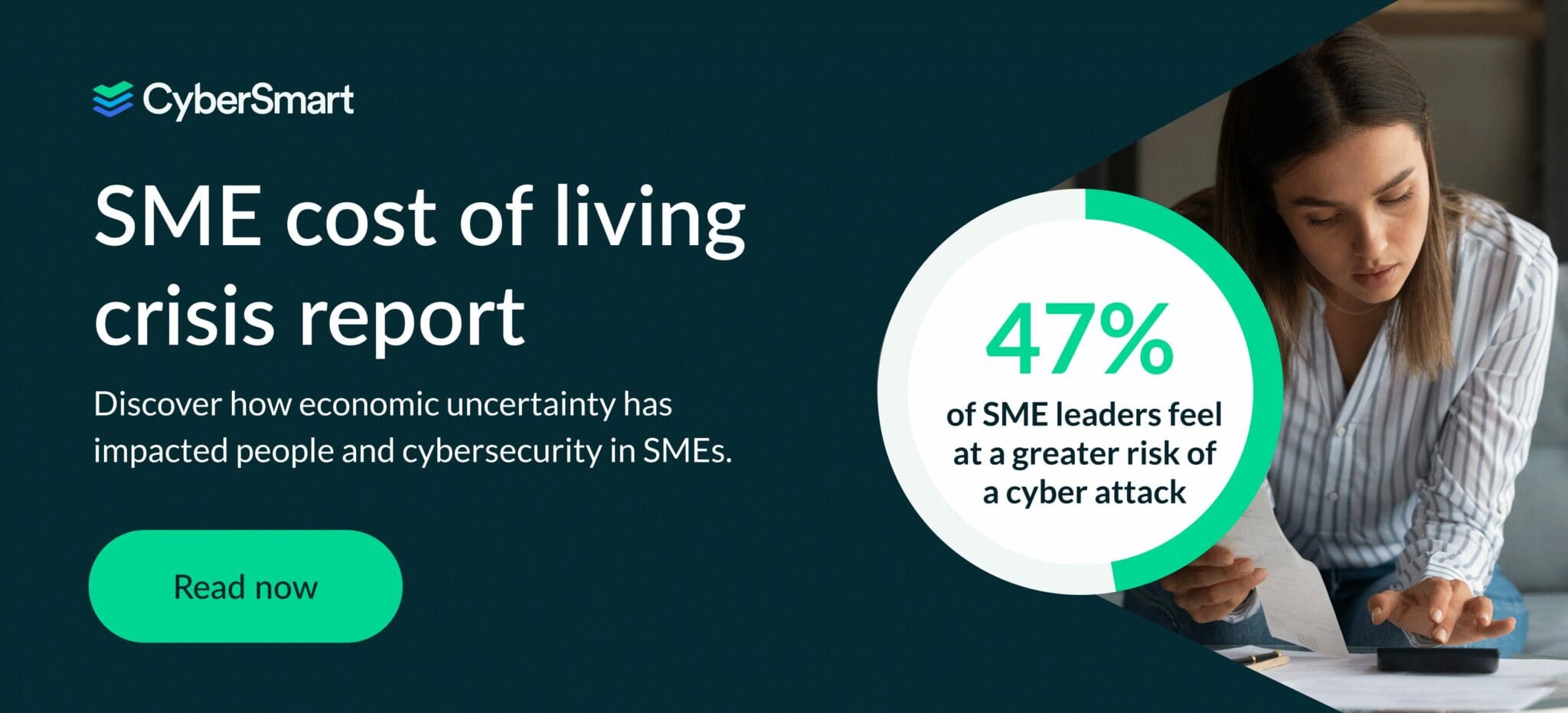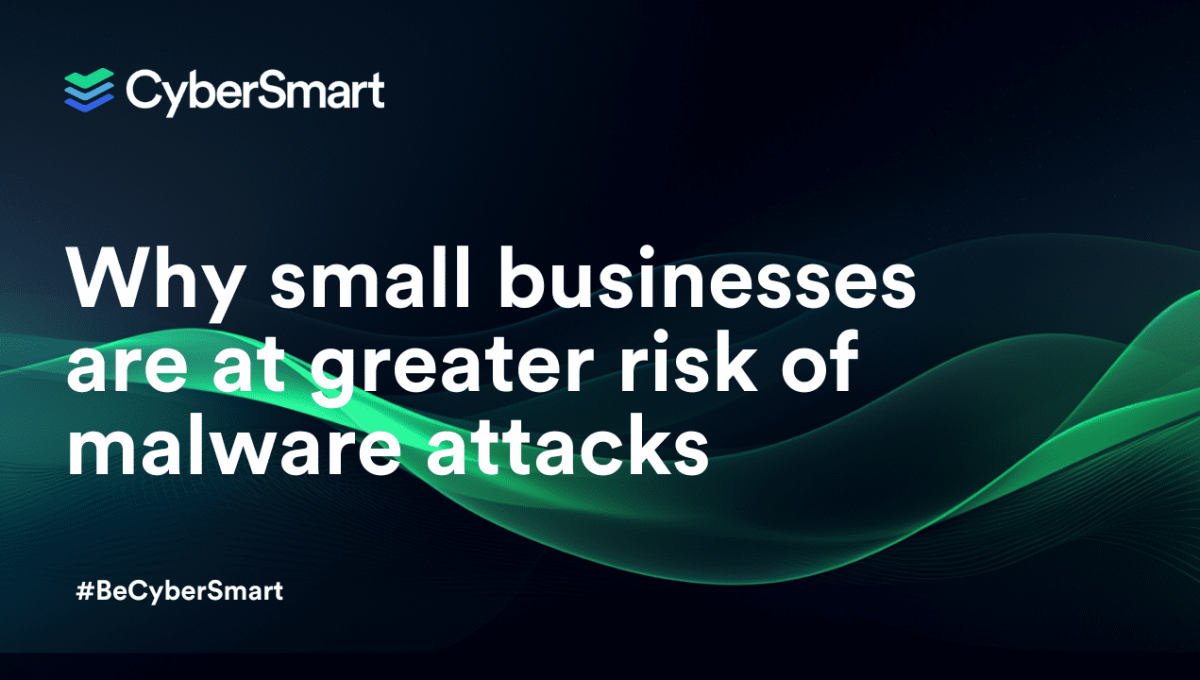Malware attacks are a well-known concern for businesses, but what type of business is more at risk?
Small businesses are just as at risk as large enterprises. In fact, 54% of SMEs reported experiencing between one to five cyberattacks in a 12-month period.
Let’s explore why.
Small businesses and malware attacks
Small and medium-sized businesses (SMEs) are less likely to have robust protocols in place to mitigate a malware attack. They might not be aware of the risks, understand what a malware attack looks like, or have the ability to react if one occurs.
And cybercriminals take advantage of unprepared businesses. 43% of cyberattacks target SMEs. Their entry points might not be as closely guarded as a larger company, and employees might not know what to do if one occurs – or even be able to identify it in the first place. Most notably, 75% of SMBs could not continue operating if they were hit with ransomware.
The cost of living crisis has hit small businesses particularly hard. But what does this mean for SMEs’ cybersecurity? Find out in our latest report.
The types of malware attack
Every malware attack will look slightly different, making them hard to identify. To help you stay aware, let’s take a look at the most common types.
- Ransomware works by grabbing your attention. It disables your company’s data using encryption until a financial ransom is paid.
- Spyware collects information from targets without their knowledge. It’s unknowingly downloaded and installed onto your devices.
- Adware displays intrusive advertisements that reappear when closed. It’s usually delivered as a high number of pop-ups that disrupt your systems.
- Trojan malware is disguised as something it’s not. Users unknowingly download it, believing it to be legitimate software.
- Mobile malware works by installing itself onto your mobile devices. This can be an issue if you use a mobile to access sensitive business data.
- Bots perform automated tasks on demand. When they make their way onto your system, it runs malicious tasks automatically.
- Worms access your systems through unintentional software vulnerabilities. This is why it’s important to keep systems up to date.
- Keyloggers monitor keystrokes on infected devices to collect sensitive information, like passwords.
- Fileless malware hijacks software and tools you already use.
A stage-by-stage breakdown of a malware attack
Every malware attack is different, but some of them follow a similar pattern. Learning how to spot a malware attack is key to preventing one before it’s too late.
Here’s a breakdown of what you can expect.
1. Gathering information
A cybercriminal is unlikely to target a business that they know has tough defences. So they’ll start the process by gathering information on your business.
They’ll identify the systems or software that you use and any potential vulnerabilities. If they find some, then your business is more likely to be a target.
2. Targeting
The cybercriminal will make their choice of malware to target you with.
They’ll conduct their activities to begin infiltrating your organisation. For example, they might start sending phishing emails with malware attached to it. This will depend on the type of malware they choose. Be aware that malware can be incredibly sophisticated, so this type of attack can come from a device, email, software, or any channel in your business.
3. Delivery
The attacker will spread the malware to your business. This could be across your systems and software, or directly to employees. Hackers only need a single vulnerability to get in, so will exploit as many entry points as possible.
4. Exploitation
This is when the malware is triggered. It establishes a foothold on your systems by exploiting the vulnerabilities it has found. Malware can also begin to replicate itself, alter your systems, and even autonomously update the cybercriminal on its progress.
The malware will begin to disrupt your systems, software, and people. It can also steal sensitive information.
How can your small business avoid malware attacks?
SMEs are inherently more at risk as they’re less likely to have robust cybersecurity measures in place. However, it doesn’t have to stay that way.
You can mitigate the risk of a cybercriminal choosing your business by:
- Improving employee training
- Implementing data encryption
- Using firewalls
- Managing user access
- Updating software and operating systems
- Obtaining a cybersecurity certification
If you’re wondering how you can achieve all these steps fast, then a cybersecurity certification is the answer. It requires your business to comply with a strict set of cybersecurity measures to qualify. Therefore, it’s an easy way to make sure you’re following best practices.
It incorporates every step, from employee training to regulating firewalls, so that no cybersecurity measure is left unturned. So when malicious cybercriminals find your business, you’re less likely to be a target.
Want to know more about the threats facing small businesses and how they’re dealing with them? Check out our research on SMEs and the cost of living crisis.

